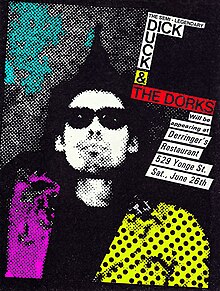Art punk or avant punk refers to punk rock and post-punk music of an experimental bent, or with connections to art school, the art world, or the avant-garde.
The earliest bands to be described as "art-punk" were bands from the New York scene of the mid-1970s such as the New York Dolls, Television, Patti Smith, and Devo in their early years. Bands such as Wire (most of whom had been art students), and The Ex, who have incorporated jazz, noise and ethnic music into their punk rock sound, took elements from the avant-garde and were described as "avant-punk". Later bands such as Dog Faced Hermans followed a similar path. The no wave scene of the late 1970s and early 1980s is seen as a branch of art punk, and was described by Martin Rev of Suicide as "a valid avant-garde extension of rock". Other bands described as "art punk" include Fugazi, and Goes Cube. Crass have also been described as art punk due to their incorporation of other art forms into their performances.
In their book Art into Pop, Simon Frith and Howard Horne described the band managers of the 1970s punk bands as "the most articulate theorists of the art punk movement", with Bob Last of Fast Product identified as one of the first to apply art theory to marketing, and Tony Wilson's Factory Records described as "applying the Bauhaus principle of the same 'look' for all the company's goods". Anna Szemere traces the beginnings of the Hungarian art-punk subculture to 1978, when punk band The Spions performed three concerts which drew on conceptualist performance art and Antonin Artaud's "theatre of cruelty", with neo-avant-garde/anarchist manifestos handed out to the audience. Wire's Colin Newman described art punk in 2006 as "the drug of choice of a whole generation."
Art/avant punk artists

References
External links
- "Avant-Punk: A Cult Explodes... and a Movement Is Born" by Robert Christgau